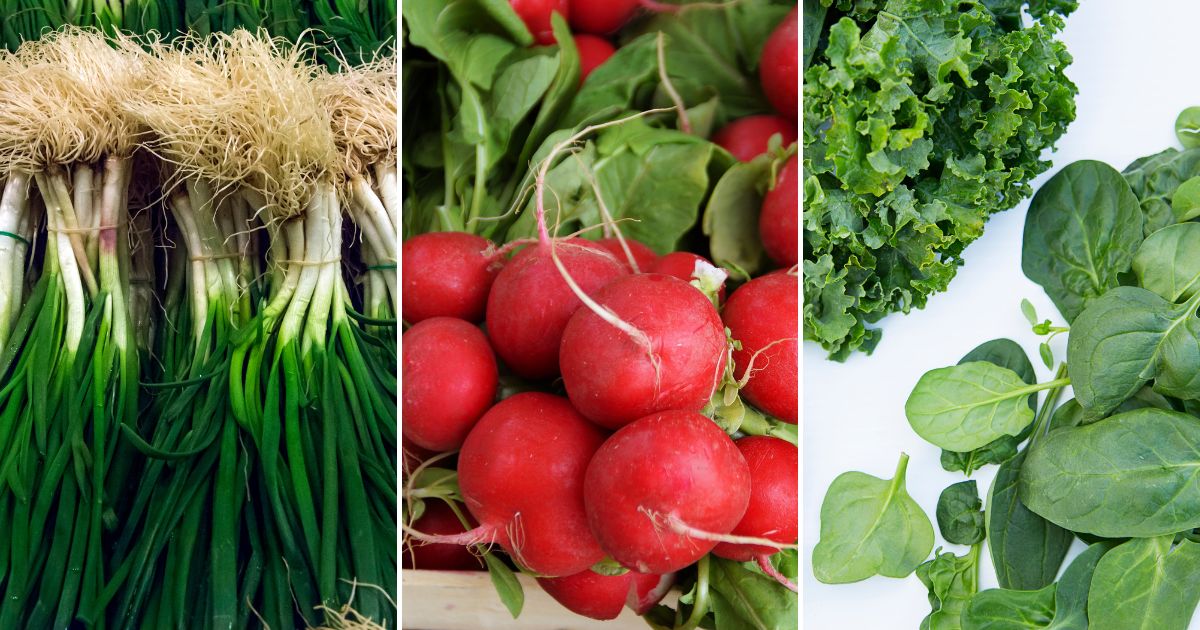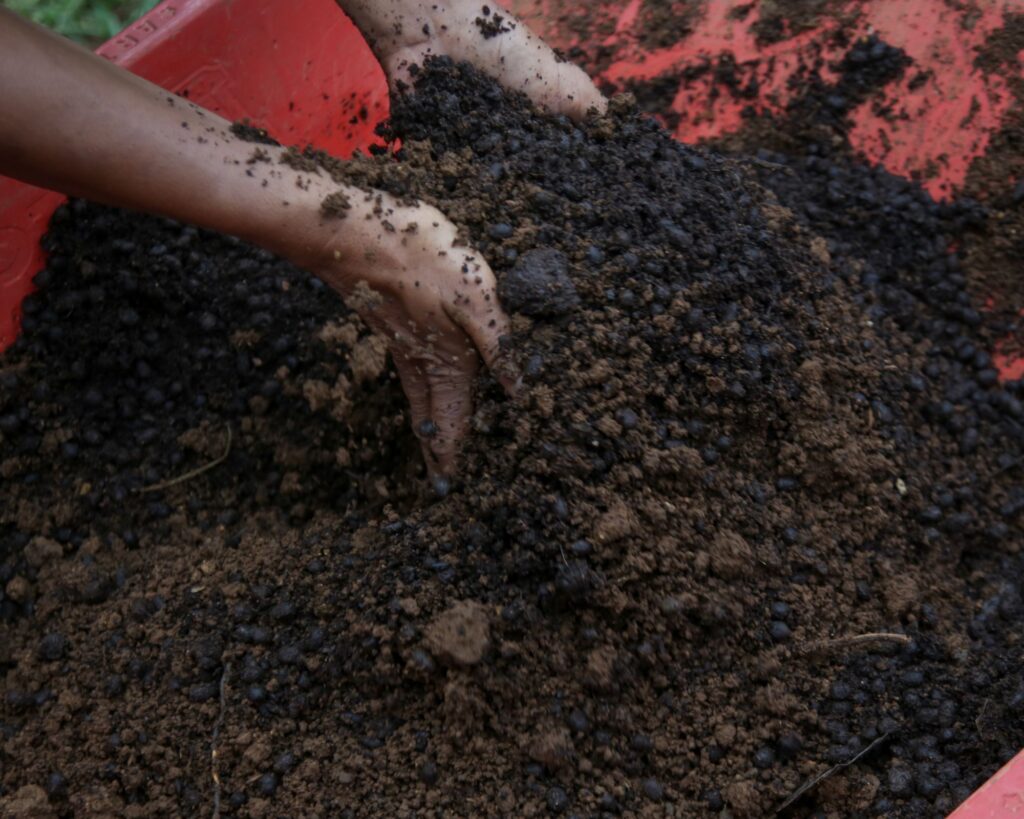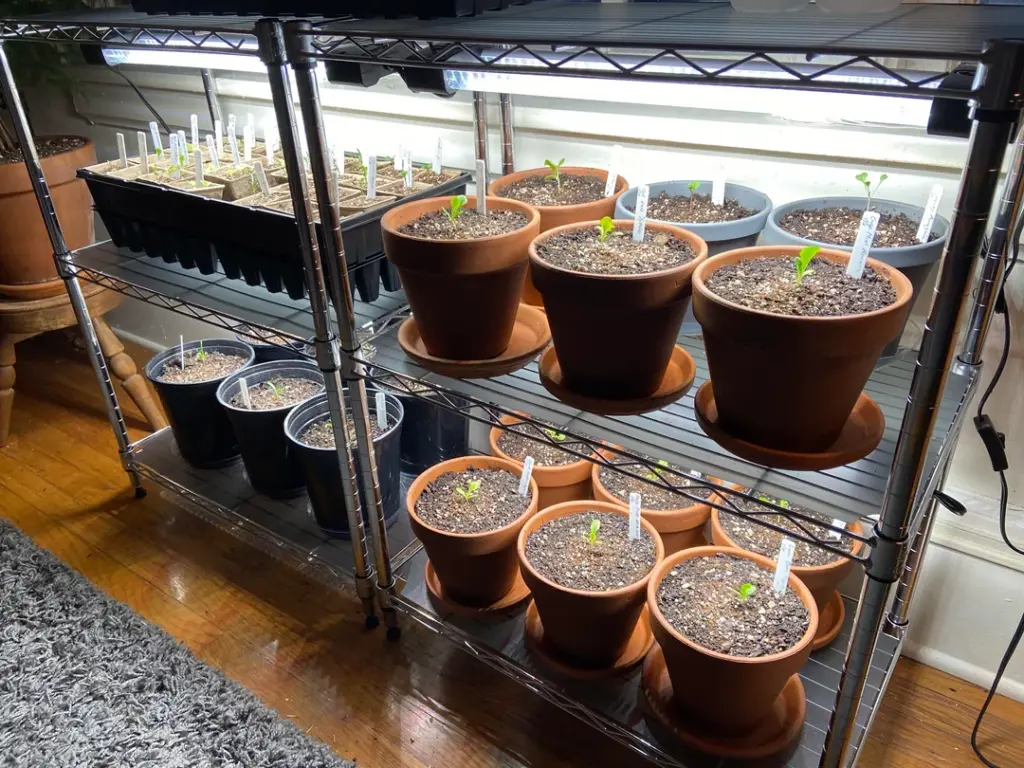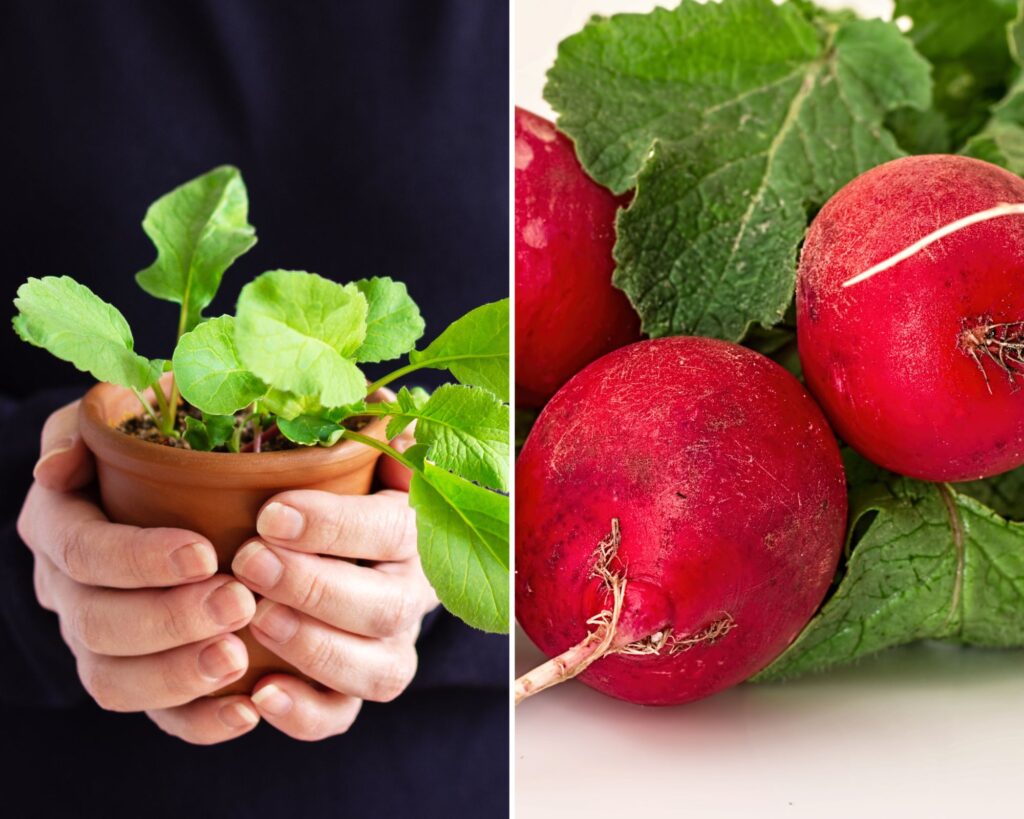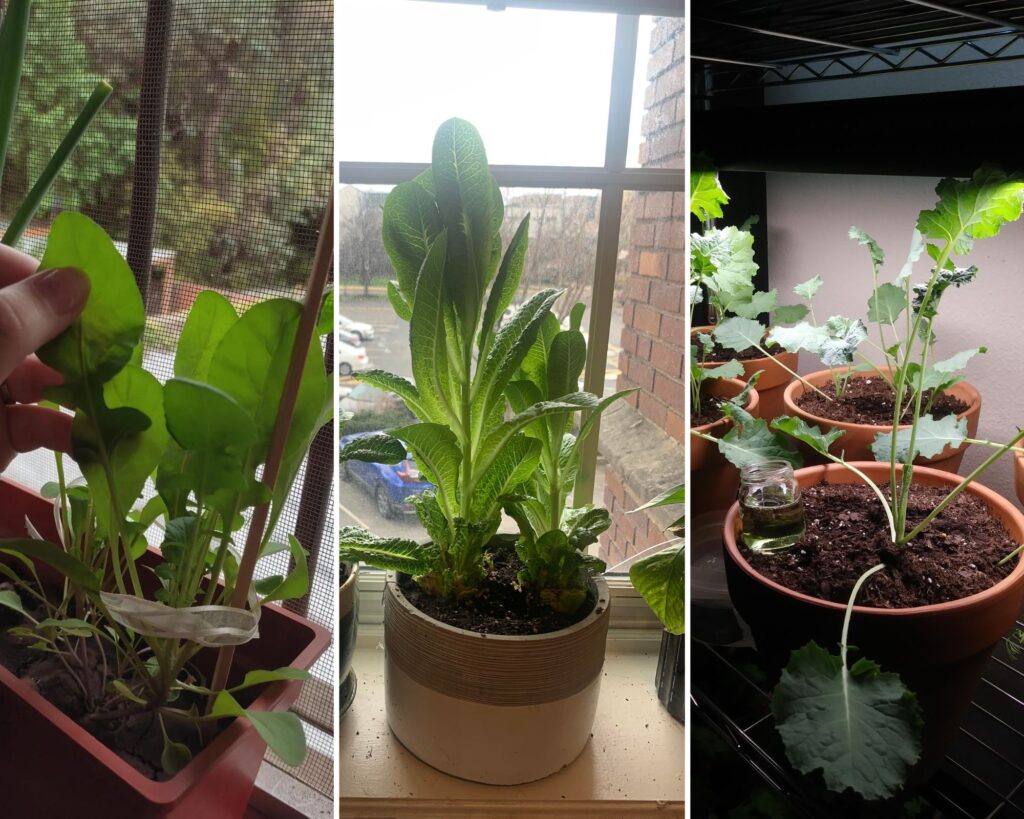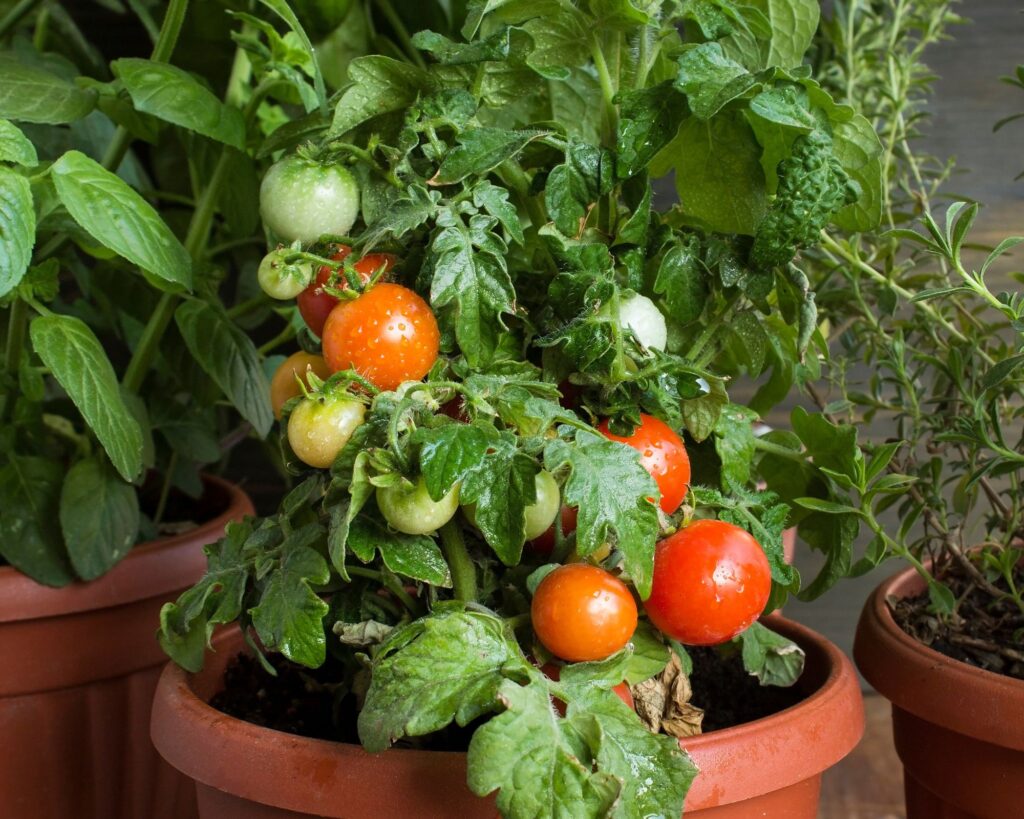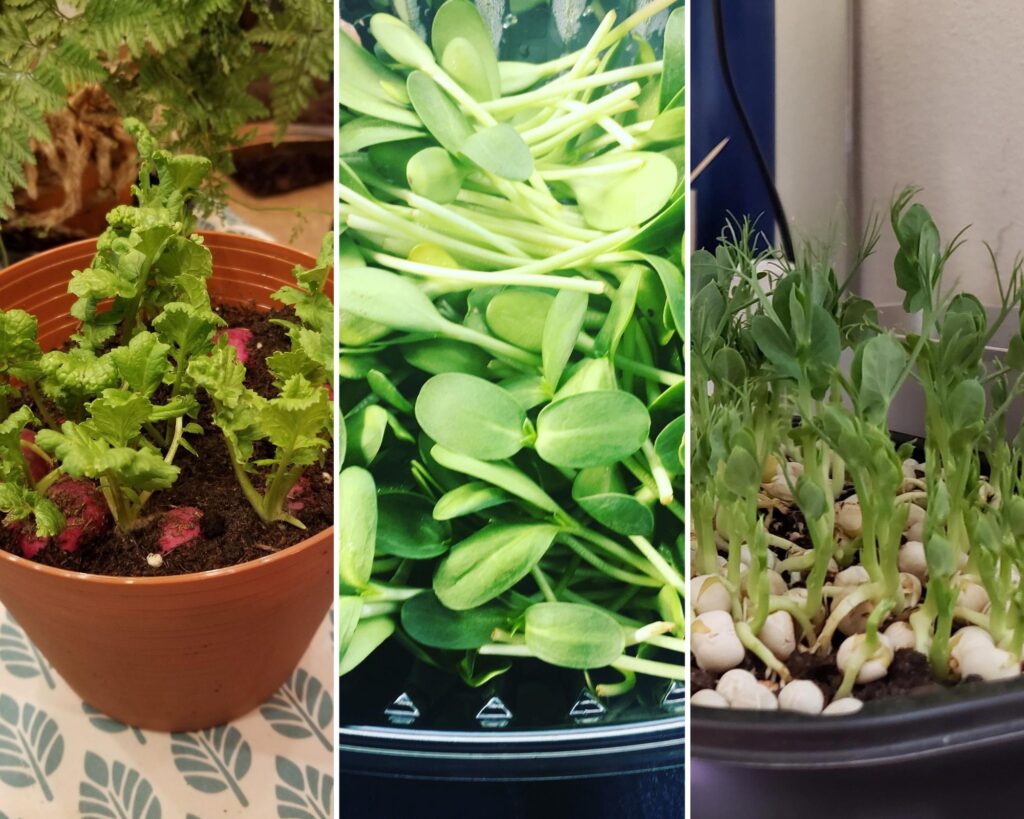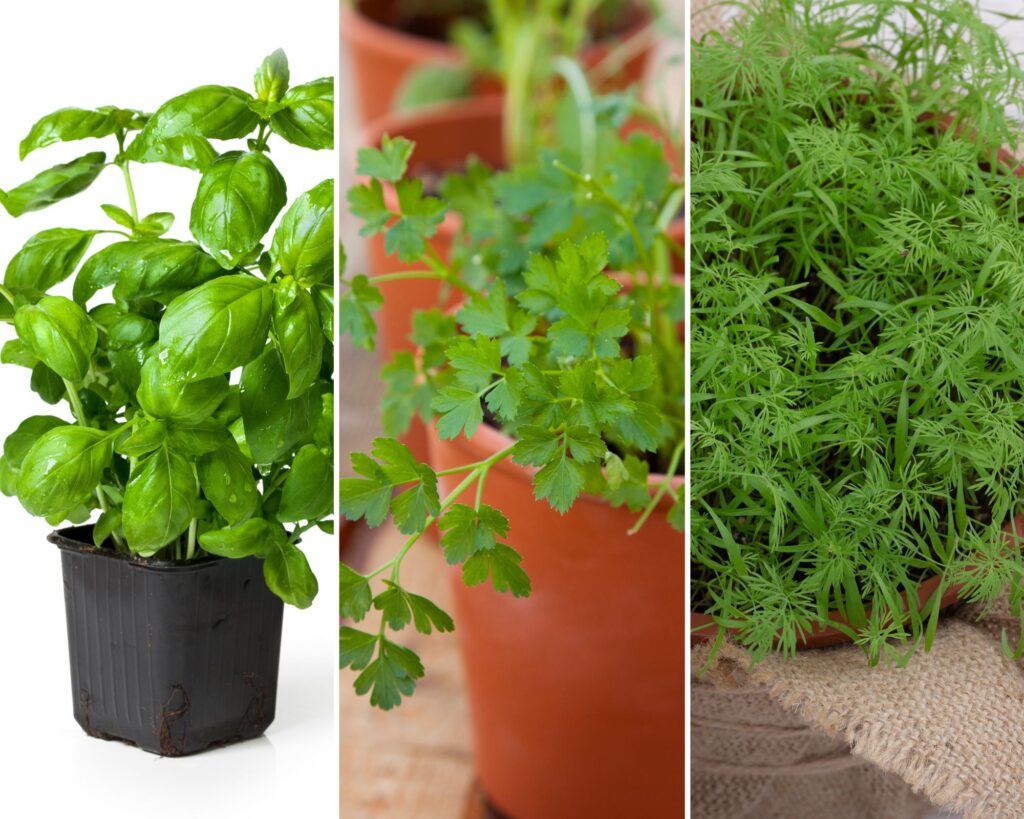Why wait months for fresh vegetables when you can enjoy a bountiful harvest in just about a month?
Yes, you read that right! With just a little space and some simple techniques, you can grow an array of fast-growing vegetables indoors, filling your kitchen with fresh, homegrown produce in no time.
Imagine plucking vibrant, crisp greens, and zesty radishes from your own indoor garden, mere weeks after planting. Whether you’re a seasoned gardener or just getting started, these quick-growing veggies will surprise you with their speed and ease.
Ready to turn your home into a green haven? Let’s dive in and get you started on this exciting journey!
Choosing the Right Containers
Starting an indoor vegetable garden requires careful planning and specific choices. Key areas to focus on include the type of containers you use, the soil mixtures you choose, and the amount and type of light your vegetables need.
Containers are crucial for indoor gardening. They should have good drainage to prevent root rot. Plastic pots are lightweight and retain moisture well, while clay pots offer better air circulation.
Ensure the size of the container matches the root system of the vegetable to allow proper growth.
Drainage holes are essential. Without them, water can build up, causing your plants to suffocate. Use trays to catch excess water and keep your indoor space clean. Self-watering pots can also be a significant help, especially for beginners.
Selecting Suitable Soil Mixtures
The soil you choose should cater to your vegetables’ nutritional needs. A quality potting mix provides good aeration and water retention. Avoid using garden soil as it may compact in containers and lack essential nutrients.
Look for a mix with a balance of peat moss, vermiculite, and perlite. This combination ensures optimal moisture and nutrient retention. Some pre-packaged mixes even come with added fertilizers to give your plants a healthy start.
Understanding Light Requirements
Light is crucial for photosynthesis, and indoor plants generally need more light than those grown outside. Use grow lights if you lack sufficient natural light.
Fluorescent lights are budget-friendly and suitable for leafy greens, while LED lights are energy-efficient and provide a full spectrum of light.
Place your plants near south-facing windows to maximize natural sunlight. Keep in mind that plants need darkness too; aim for 12-16 hours of light per day depending on the vegetable.
If using grow lights, position them 6-12 inches above the plants to ensure adequate light penetration.
Correct light management will help your vegetables flourish indoors, providing you with fresh produce in about a month. So, here are seven vegetables you can harvest in about a month.
1. Radishes: The Rapid Root Crop
Radishes are among the fastest-growing vegetables. In just 20-30 days, you can enjoy crunchy, spicy roots. They require minimal space and can thrive in small pots. Ensure they get about 6 hours of sunlight daily, and keep the soil moist.
Plant them in loose soil, spacing seeds about an inch apart. Radishes grow best in cooler temperatures, making them ideal for indoor conditions. Thin seedlings when they are a few inches tall to encourage proper growth.
2. Leafy Greens: A Cut Above
Leafy greens like arugula, lettuce, and kale grow quickly and can be harvested multiple times. They thrive in containers with good drainage and require about 4-6 hours of sunlight daily.
Use a well-draining, nutrient-rich potting mix. Harvest leaves when they are young and tender for the best flavor.
Snipping outer leaves encourages continuous growth, allowing you to enjoy fresh greens for weeks.
3. Scallions: Sprout to Harvest in a Flash
Scallions, or green onions, are easy to grow and perfect for indoor gardening. They can be ready for harvest in just 21-30 days.
Plant scallion seeds or regrow from store-bought bulbs by placing them in water until roots form.
Transfer to a pot with soil, keeping them in a sunny spot. Harvest when they reach a few inches in height. Snip the green tops, leaving the bulbs to regrow for multiple harvests.
4. Cherry Tomatoes: Countertop Gems
Cherry tomatoes are small but prolific plants perfect for indoor growing. Choose dwarf or bush varieties that do well in containers.
They need about 6-8 hours of sunlight and a regular watering schedule.
Plant seeds in nutrient-rich soil, using stakes or a cage for support. You’ll see blooms in a few weeks and fruit soon after. Harvest when the tomatoes are firm and fully colored.
5. Spinach: The Speedy Leaf
Spinach is another fast-growing leafy green, ready to harvest in about 4-6 weeks. It prefers cooler temperatures and partial shade, making it suitable for indoor environments.
Use a deep pot with well-draining soil. Water consistently, keeping the soil moist but not waterlogged.
Harvest leaves when they are young and tender for the best taste. Continuous harvesting encourages new growth.
6. Microgreens: Petite but Powerful
Microgreens are tiny, flavorful greens harvested when they are only a few inches tall. They grow quickly, often ready in just 10-21 days.
Popular varieties include radish, sunflower, and pea shoots.
Use shallow trays with good drainage and fill them with a light potting mix. Sprinkle seeds evenly and mist daily. Harvest with scissors once the first true leaves appear.
7. Herbs: Flavorful and Fast-Growing
Fast-growing herbs like basil, cilantro, and dill are perfect for adding fresh flavor to your dishes. Most can be harvested in about 3-4 weeks.
They need plenty of sunlight and well-draining soil.
Plant seeds in individual pots or a large container. Water regularly, but avoid overwatering. Snip the tops to encourage bushier growth and more leaves.
Use fresh leaves in your cooking for a burst of flavor.
Harvesting and Using Your Produce
Harvesting your indoor vegetables is simple and satisfying. For most veggies, like radishes and leafy greens, use a sharp pair of scissors to snip the leaves.
For root vegetables, gently pull them out by the tops, giving them a slight twist if they resist.
Once harvested, wash all produce thoroughly. For delicate leaves, a gentle rinse will suffice. Scrub root vegetables under running water.
Fresh veggies are versatile. Leafy greens can be used in salads, smoothies, or as sandwich toppers. Radishes add crunch to any dish.
If you have herbs, use them to season your meals. Chop them fresh or dry for later use.
To prolong the freshness, store produce in the fridge. Wrap leafy greens in a damp paper towel, and keep root vegetables in a cool, dark place.
Enjoying your homegrown vegetables not only offers a taste of freshness but also a sense of accomplishment.
In just a few short weeks, you can transform your indoor space into a thriving mini-garden, filled with fresh, homegrown vegetables.
Not only will you enjoy the taste and health benefits of pesticide-free produce, but you’ll also experience the satisfaction of growing your own food right at home.
This quick and rewarding venture into indoor vegetable gardening is sure to brighten up your meals and your space.
So, get started today, and in just about a month, you’ll be enjoying the fruits (or rather, vegetables) of your labor!
